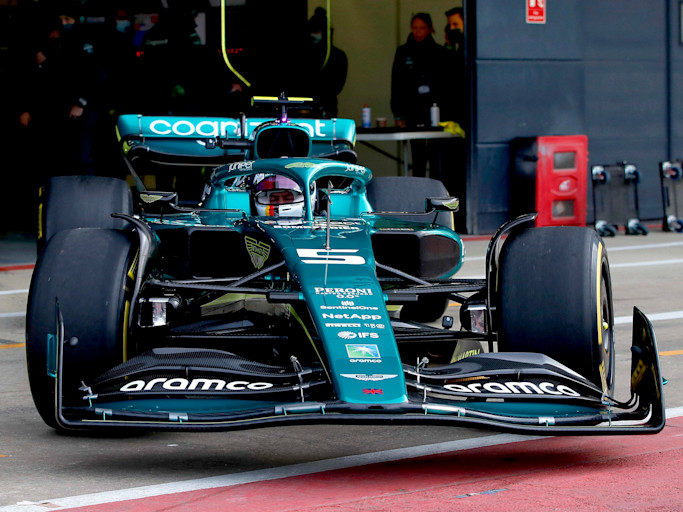
With reams of data and insight to come in pre-season testing next week, we're bringing you the lowdown into the six key areas of Formula One's technical revolution.
The new-for-2022 Formula One cars are a radical revolution of their predecessors. But, in terms of safety developments, it's a case of evolution.
In collaboration with the teams, the FIA and F1 continue to push boundaries in the pursuit of greater safety standards, and the next generation of F1 cars is a perfect demonstration.
The new cars are heavier than their predecessors, weighing in at a minimum of 795kg, an increase of around 40kg on last year's machines.
While some of this can be explained by the increased wheel size, some of it is down to safety advances.
AMR22: Tech insights
The new era of Formula One has arrived. Designed to produce better racing, and heralding the return of ground effect, the AMR22 represents F1's biggest design revolution in decades.

The teams, along with the FIA and F1, review every serious incident, such as Romain Grosjean's 2020 Bahrain Grand Prix crash, to understand where the championship can make strides in safety.
For 2022, there has been a change to crash testing for the rear and front structures, with teams expected to produce designs that can absorb far more energy, roughly 48% more at the front and 15% more at the rear, according to F1.
Another change under the skin, a direct consequence of Grosjean's crash, is that in the event of an incident, the power unit will separate from the chassis more safely, without exposing the fuel tank.
A more visible change relates to the front of the car. The new-look nose is designed to dissipate energy and the chassis has been strengthened elsewhere to resist side-on collision impact.
This has a knock-on effect for car production, as Aston Martin Aramco Cognizant Formula One™ Team's Production Control Manager, Simon Cayzer, explains.
"It's meant that we've had to do a lot more on the R&D side prior to creating full production components," he says.
"So, we've had to make quite a few iterations of some significant parts to prove that we can pass those new regulations.
Sights and sounds of an F1 2022 car
Turn up the volume and immerse yourself in the sights and sounds of a new F1 era, as the Aston Martin Aramco Cognizant Formula One™ Team AMR22 hits the track at Silverstone.

"Those FIA safety milestones are known quite far in advance. So, we're working towards them from a very early stage."
Chief Technical Officer Andrew Green goes on to explain how the safety improvements have affected the AMR22: "The chassis must pass a series of homologation load tests from the FIA, and it was decided, probably 18 months ago, that we needed to make improvements to chassis design.
"They were very safe anyway. But, after a few incidents in the last couple of years, it was deemed that we needed to take a step up.
"That's one of the reasons why the car weight has gone up.
"It's the impact resistance of the chassis that's been developed. That has taken a huge step forward, and the impact resistance at the front has also improved.
"Overall, the survival cell is a step stronger than it was in 2021, and that comes with weight."
While the drivers will feel the weight difference when they drive the AMR22, the benefits of greater safety need no explanation.
Access I / AM to get closer to the team.




























